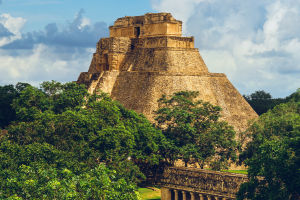Is the Masai Mara really worth all the hype? If you've ever seen photos of wildebeests charging across crocodile-populated rivers or lions lounging in golden grasslands, you probably already know the answer.
But planning a safari isn't like booking a beach holiday—you're stepping into one of the rawest, most unpredictable corners of the world. So let's break down exactly how to make the most of your Masai Mara trip—from timing and logistics to once-in-a-lifetime wildlife moments.
What Makes the Masai Mara So Special?
At its core, the Masai Mara National Reserve is a 580-square-mile ecosystem in southwestern Kenya, connected to the larger Serengeti plains in Tanzania. What makes it extraordinary is how alive it is—lions, cheetahs, elephants, zebras, and giraffes roam freely, often right next to your safari vehicle.
But the true highlight?
The Great Migration From July to October, over 1.5 million wildebeests, along with zebras and gazelles, thunder across the Mara River. It's often called "The Greatest Show on Earth," and for a good reason.
Best Time to Visit: It's All About Timing
If your goal is to witness the Great Migration, aim for mid-July to late October. That's when the herds are typically in the Mara. The dramatic river crossings, where the animals face strong currents and lurking predators, usually happen in August and September.
If you'd rather avoid crowds and still enjoy abundant wildlife, consider going during the shoulder seasons:
• January–March: Calving season. You'll see adorable baby animals and lots of predator action.
• November–December: Green season. The landscape is lush, and birdwatching is excellent.
How to Get There: Nairobi to the Wild
The easiest way to reach the Masai Mara is by small plane from Nairobi's Wilson Airport—flights take about 45 minutes and cost between $200–$300 round trip.
If you prefer road travel, it's a 6-hour drive from Nairobi (depending on weather and road conditions), and you'll need a 4x4. Some travelers choose a combination of both—driving in, flying out.
Safari Costs: What to Expect
Safari pricing can vary dramatically depending on where you stay. Here's a general range:
• Budget campsites or mobile tents: $150–$250 per night
• Mid-range lodges or permanent tented camps: $300–$600 per night
• Luxury lodges: $800–$2,000 per night
The entry fee for the Masai Mara National Reserve is about $80 per person/day for non-residents.
Most packages include game drives, meals, and sometimes even transfers from Nairobi. Just remember that tips for guides and staff aren't usually included—budget around $10–$20 per day for tips.
What You'll Actually See
Yes, the Big Five are here—but what makes the Mara unique is how accessible and concentrated the wildlife is. You don't have to drive for hours. On a single morning game drive, you might spot:
• A pride of lions finishing off last night's hunt
• Cheetahs sprinting across the plains (the Mara is one of the best places to see them)
• A leopard draped across an acacia tree
• Hundreds of elephants and giraffes grazing
• And during migration season, endless herds of wildebeest
This isn't a zoo—it's nature, unscripted. That means things can be slow some days, but the payoffs are unforgettable.
Maasai Mara National Reserve
Tips from Seasoned Safari Travelers
1. Book early if you're planning to visit during the migration season—top lodges fill up nearly a year in advance.
2. Choose your guide carefully. A knowledgeable guide can completely change your experience. Look for guides certified by the Kenya Professional Safari Guides Association.
3. Pack light but smart. Neutral colors, layers, sunscreen, insect repellent, and binoculars are a must.
4. Expect early mornings. Drives usually start around 6 AM—the best time to see active predators.
5. Bring cash for tips and small purchases—ATMs are rare once you're in the Mara.
Where to Stay: Inside or Outside the Reserve?
You can stay inside the official Masai Mara National Reserve or in the community-run conservancies around its borders. Both offer excellent wildlife viewing, but there are key differences:
• Inside the reserve: You'll pay a daily park fee and may have more vehicles around during peak season
• In conservancies (like Olare Motorogi or Naboisho): You may pay a bit more, but you'll have fewer vehicles and access to night drives or walking safaris (not allowed in the main reserve)
Is It Safe to Visit?
Yes—especially if you travel with a reputable safari operator. The lodges are secure, guides are experienced, and wildlife doesn't target people unless provoked. However, keep in mind that you are still in the wilderness. Always follow your guide's instructions.
If you're looking for a trip that's far from predictable and packed with real, raw nature, the Masai Mara delivers in every way. Whether you want to photograph lions at sunrise, follow the migration, or simply breathe in the quiet of the open plains, this safari is more than just a holiday—it's a memory you'll carry for life.
Have you been on a safari before, or is it still on your bucket list? What animal would you be most excited to see up close? Let's talk about it.


